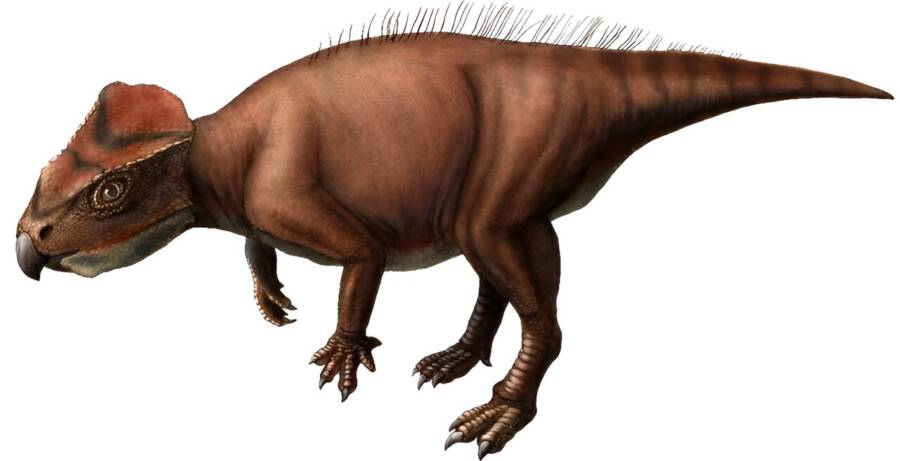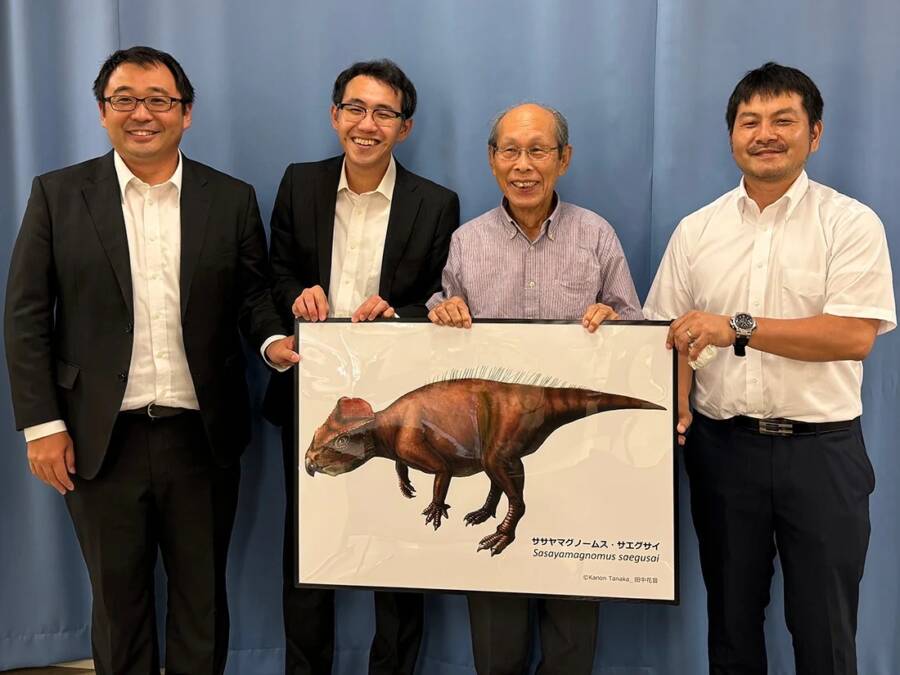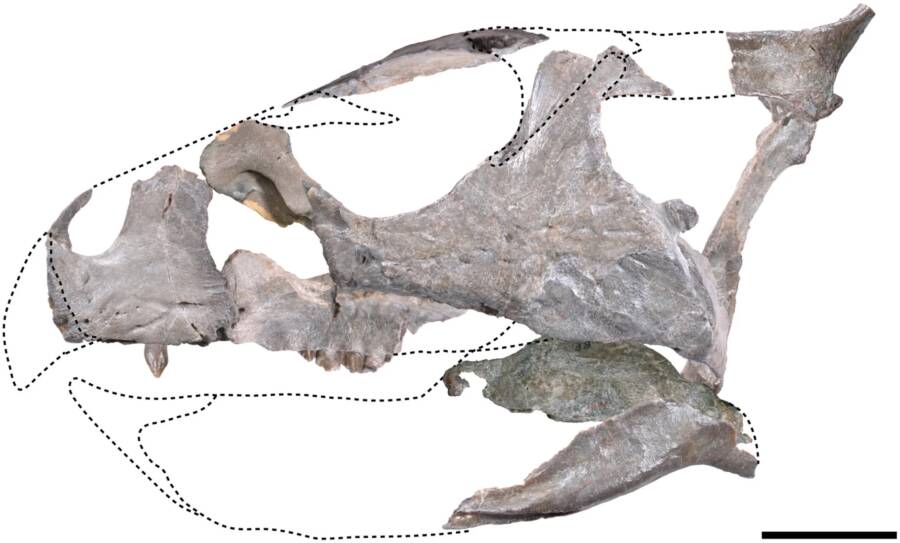The Sasayamagnomus saegusai specimen found in Japan was about three feet long and weighed 22 pounds, making it much smaller than its relative the Triceratops.

Carleton UniversityAn artist’s depiction of Sasayamagnomus saegusai.
Paleontologists in Japan recently announced the discovery of a new Triceratops relative unearthed in the city of Tamba-Sasayama. This small, horned creature was part of a group known as ceratopsians, herbivorous dinosaurs known for their large horns and frilled heads.
The most famous species of ceratopsian is the Triceratops, but this newly discovered species, Sasayamagnomus saegusai (meaning “a small humanoid spirit guarding hidden treasures under the ground of Sasayama”), lacks the characteristic horns and frills. As researchers note, this is because it was a fairly primitive ceratopsian.
S. saegusai was also found further east than any other ceratopsian, and its discovery is shedding light on how this prehistoric species spread across the Earth.
The Discovery Of ‘Sasayamagnomus Saegusai’
In a new study published in the journal Papers in Paleontology, researchers announced the discovery of Sasayamagnomus saegusai. Per the report, the fossil included 17 bones, most of which belonged to a single individual. The specimen was still young and growing at the time of its death, as evidenced by its internal bone structure and growth rings. Still, scientists were able to determine quite a bit of information from its remains.
S. saegusai was a type of ceratopsian, though it lacked two of the most prominent features of the group: the large horns and the head frill.

Takako IshidaThe second half of the name Sasayamagnomus saegusai honors late Japanese paleontologist Dr. Haruo Saegusa.
The dinosaur was much smaller than its famous cousin, the Triceratops. The individual found in Japan was just three feet long and weighed around 22 pounds.
Ceratopsians lived in the northern hemisphere between the late Jurassic and Cretaceous periods, but a specimen has never been found as far east as S. saegusai. The study authors wrote, “Here we describe a new, early-branching neoceratopsian… representing the easternmost fossil record of ceratopsians in Asia.”
This discovery supports the theory that ceratopsians originated in Asia before spreading to North America around 110 million years ago.
How Ceratopsians Spread Across The Globe
During the time S. saegusai roamed the Earth, Eurasia and North America were connected by the Bering land bridge, and the planet was undergoing extreme global warming that created vast forested areas.

Takako IshidaPaleontologists found 17 fossilized bones from Sasayamagnomus saegusai, most of them part of the skull.
“Furthermore, the simultaneous occurrence of global warming (which enabled the development of extensive forests in the Arctic region) and the emergence of the Bering land bridge… probably played a crucial role in facilitating the immigration of neoceratopsians from Asia to North America,” the research team wrote.
It is therefore likely that these two elements, in conjunction, allowed for the passage of ceratopsians from Eurasia to North America in the early stages of their evolution.
Altogether, this new discovery helps to further clarify the prehistoric timeline of ceratopsian dispersal across Eurasia and North America, unlocking new insights into the world of dinosaurs.
After learning about the new dinosaur identified in Japan, read our list of 31 fascinating dinosaur facts. Then, learn about the most bizarre dinosaurs to ever exist.





